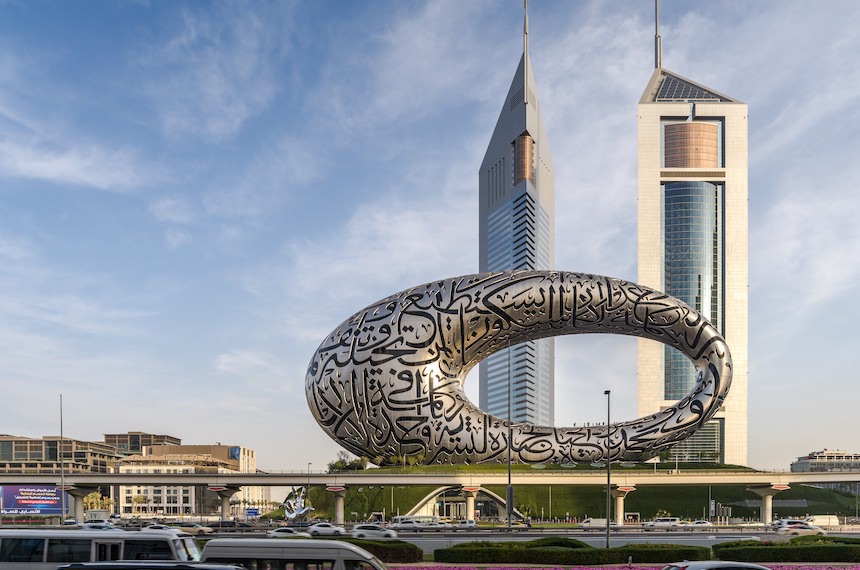About DFDF
The Dubai Future District Fund was established by the visionary leadership of Dubai to support innovative technology startups with additional funding and to foster a thriving venture ecosystem in the region. Dubai has long been the leading startup tech hub and has consistently ranked first in terms of number of deals and amount of capital. That said, the emirate has not historically had a concerted effort to invest capital directly into startups or the venture capital funds that support them, though supporting the private VC community is a significant part of the role of government and an effective way to catalyze economic growth. At the same time, there are areas of opportunity in startups (at the Pre-seed to Seed stages, for example), or in key sector-relevant innovations that are strategic and warrant a direct investment.
Our mandate is to invest 50% of the capital into venture capital funds (Fund of Funds) and 50% directly into startups in our thesis. Given we’re new on the scene, we thought we would introduce our investment strategy and how we think about the funds and startups we support, which we’ll elaborate on further below.
Evergreen Structure
Patient Capital
One key innovation to note in the way that we’re structured is that we are an evergreen fund, meaning we aren’t beholden to the 10 year lifespan of a typical VC fund. This allows us to focus on investing in technologies with various return horizons and take a longer-term view on returns. The open-ended nature of the fund aligns with our government-backed roots and desire to invest in truly innovative technologies of the future. Understandably, private VCs that have an LP-GP structure, especially in emerging markets, tend to seek out startup investments that they believe will exit with a 7-10 year horizon so that they can meet their target returns to LPs by the end of the fund’s life. For us, our return horizon is theoretically forever, and we’re keen on pushing the envelope on investments with deeper innovation than the typical low hanging fruit. Our structure allows us to support the efforts of the VC community, while allocating more patient capital into the innovative technologies of the future.
Performance Driven
What’s more is that the fund is designed to incentive the team akin to a private VC fund, through carried interest. In the fast-moving Dubai spirit, we are innovating on the fund model in a way we feel best aligns to the interests of our shareholders, while addressing the needs of the founder and investor communities, with a mission-driven team that believes that: if you solve a problem for millions of people or fix a problem for thousands of enterprises then you create value that will generate outsized returns.
Forging Next Generation Innovation
We expect that as we build out our funds portfolio, about half of our direct investments will be co-investments with our fund managers and the other half will target areas where there are still gaps in private VC funding, specifically in deeper tech companies that may require longer R&D cycles or higher CapEx. The private VC fund landscape in the region still mostly invests agnostically across sectors given the nascence of the region and into companies that have a 7-10 year return horizon. Our aim is to start shifting more capital attention towards deep(er) tech — the more meaningful innovations solving issues facing millions of people now and in the future — that require capital to be invested beyond a 10 year horizon.
Conscious Portfolio Construction
We’re aware of the longer gestation periods that will be needed (especially in our markets) for investing in deeper technologies. Investing in DeepTech requires significantly more dry powder, patient capital and a nurturing environment in terms of regulation, infrastructure and customers. As such, we plan to start with software-based B2B solutions that address areas such as the Future of Work, HR, finance, real estate, logistics, entertainment or education with an eye on good governance, financial prudency, impact on society and the environment. These types of businesses may still harness the meaningful change that new innovations can bring, impacting humanity in a positive way and building their companies in a sustainable way. Yet, they importantly have a similar 7-10 year return horizon, as most of the deal flow currently in the region being invested in by local and regional VCs. As we build out the initial short-term return horizon curve (and we have more funds in our portfolio covering agnostic investing), we’ll begin focusing on our direct investments more towards the gap-filling areas that are relevant to the future economy solutions that address the needs of tomorrow. These ‘stage 2’ startups may have a 10-15 year return horizon, or just slightly longer than the typical VC investment horizon. Eventually, and as our ecosystem continues to mature, we’ll continue to stretch our reach to a point where our direct investments are solely focused on areas where there are funding gaps, pushing the envelope further along the way.
Geographic Focus
We view our geographic scope in terms of several concentric circles, starting with Dubai at the center, followed by the UAE, the Middle East, North Africa, Pakistan and Turkey (MENAPT), and Middle East, Africa and South Asia (MEASA) and then global, with more specific criteria as we move further outward from Dubai. We believe it is important to be thoughtful about how we’re building, to ensure a healthy foundation for the future. For example, for local and regional funds, we understand that they have wider theses around sector foci, while perhaps narrower on geography and stage. So, when we look at international funds or startups, we are keen to work with sector-specific funds/startups to add more capital, subject-matter expertise and talent in verticals that align with our thematic pillars. It’s vital that we’re considerate of the complementarity of our efforts in order to not cannibalize efforts on the ground locally, fueling a strong, sustainable ecosystem for the long-run. For now, given we’re still in our first year of operations, we’re centering our attention on the core of our geographic coverage and evaluating startups with a presence in Dubai and the UAE.

Stages of Funding
(1) Direct Investments
For direct investments, we invest across two main strategies, Build and Catalyze, which cover approximately five stages of early-stage venture capital funding rounds from Pre-seed to Series C. The Build strategy is focused on Pre-seed and Seed stage investments, primarily meant to support startups within the Dubai Future District in their earliest phases of growth and support them through value-added support of our shareholders and stakeholders of Dubai, whether they be from the public or private sector. Our ticket sizes for these companies range between $250,000 and $1,000,000. The Catalyze strategy is focused on Series A to Series C investments with ticket sizes between $1-3 million for Series A, $3-5 million for Series B and $5-7 million for Series C, inclusive of follow-on investments.
(2) Fund of Funds
For Fund of Funds investments, what we call our Anchor strategy, our aim is to support the investors who are fueling the next wave of innovative companies through investments at all stages of a startup’s lifecycle, across all key sectors and focused on the relevant geographies of the MENA region and beyond.
We’re currently allocating across 3 types of venture capital funds:
(a) Incumbent regional VCs who have been investing in Dubai, typically on their second, third or fourth funds;
(b) New and emerging fund managers who may be starting new types of niche funds, which could be solo GPs starting new firms and usually come in the form of microfunds that target Pre-seed investments;
(c) International funds that demonstrate a presence and investments in Dubai and bring sector-focused VC expertise, particularly within our Future Economies and Future of Finance themes.
Thematic Pillars
The fund will invest directly across two thematic pillars, which we call the Future of Finance and Future Economies.
(1) Future of Finance
The Future of Finance pillar, which we’ll dive deeper into in subsequent posts, comprises the 15-20 sub-sectors of FinTech, the horizontal themes of financial inclusion and embedded finance, LegalTech, RegTech and the finance side of web3. We see a lot of potential in these sectors as they challenge larger industries, create new opportunities and empower users of all types to have access to safe, well-governed financial services.
(2) Future Economies
Our Future Economies thesis is defined less by which sectors may or may not fall within it, but rather by how we see the world economy evolving between now and 2050 and the issues it’s expected to face over the course of these 30 years. It is through this lense that we look for technological innovations that are providing meaningful solutions to the problems that will face millions of people, in our own backyard and the wider region. Aligned with the UN’s Social Development Goals, we look to support founders that are building unique technologies across the Future of Food, the Future of Health, the Future of Security, the Future of Work, the Future of Logistics, the Future of Education and the Future of Entertainment.
Stewards of the Ecosystem
Apart from allocating capital to funds and startups building the innovative companies of the future, we take our role of ensuring a healthy development of the local and regional ecosystem seriously, notably in terms of governance, societal impact and the Sustainable Development Goals of the UN. To do this, we value our partnerships with fellow LPs, VCs and founders to implement best practices and global standards to investing and company building.
As we’ve seen in the recent bull market, growth at all costs is not a sustainable strategy for startups, particularly when it comes at the cost of good governance. Furthermore, we try to be thoughtful about building the ecosystem in a balanced way. Our portfolio model aims to address the needs of the VC community, the startups they back and a variety of technologies across markets that are relevant to our region. In addition, we think a lot about complimenting the local ecosystem with international funds or startups that can bring unique talent, know-how and businesses that aren’t already being addressed by the startups on the ground.
Stay tuned for our next posts as we examine our two thematic pillars in more detail.
If you think you’re a fit for DFDF, we would love to hear from you.

